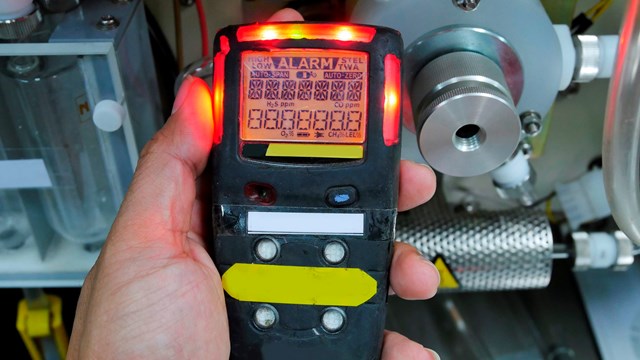You can't walk down a Manhattan street these days without passing under one or more sidewalk sheds erected to protect pedestrian and vehicular traffic from pieces of building exterior that might fall. Local Law 10 of 1980 and the recently-enacted Local Law 11 of 1998 apply to buildings that are six or more stories and were put in place to address the dangers associated with deteriorating building facades. Understanding these laws can be tricky, and complying with them - especially with Local Law 11 - can be both costly and time-consuming.
Passed in February 1980, Local Law 10 mandates a visual examination at least once every five years of the building's exterior under the supervision of a licensed architect or licensed professional engineer on behalf of the building's owner. While the preferred method is by an observation platform such as a scaffold, the inspection can also be done from the street using photographic magnification techniques or binoculars.
The architect or engineer must submit a written report to the Department of Buildings (DOB) including documentation of any unsafe conditions, and the owner must begin repair work right away. Local Law 10 specifically excludes exterior walls set back more than 25 feet from the street and/or any paved pedestrian walkways, plazas or play areas routinely used by the public; walls above the sixth story that are set back more than 25 feet from the wall below; exterior walls more than 25 feet on either side of a paved walkway at right angles to a building's walls that are used either for occupant or service portion egress; and buildings having an ongoing exterior wall maintenance program acceptable to the DOB.
Owners who neglect to comply with Local Law 10 can be punished by a fine of up to $1,000 and/or by imprisonment of up to six months, and also are subject to a fine of $250 for each month of non-compliance. Clearly, it was the city's intention that Local Law 10 would make buildings, and life in the city, safer. But tragic events over the last two years, such as the death of a 16-year-old student killed by a falling brick, the shower of bricks that fell from an office building on Madison Avenue and several casualties resulting from similar occurrences, prompted the city to pass Local Law 11 in March 1998 to tighten many of the requirements present in Local Law 10.
"The first major change under Local law 11 is that all facades of the building must be inspected," explains Alan Epstein, PE, MSCE, Esq., a licensed professional engineer, attorney and president of Manhattan-based Epstein Engineering PC. "This means that both the time and cost of the basic Local Law 11 inspection are going to be greater than under Local Law 10. But the even greater impact is going to be the cost of repairs because the walls now required to be inspected in many cases have never been examined or repaired before."
The next Local Law 11 requirement eliminates the option of the visual inspection allowable under Local Law 10 and mandates that at least one scaffold be dropped from the top of the building to the bottom in order to perform a hands-on inspection. According to Epstein, this will significantly increase the cost of the inspection. In addition to the engineer or architect overseeing the inspection, a contractor also must be engaged to provide the scaffolding and the manpower to operate it. What's more, the issue of requiring a sidewalk shed during the scaffold drop - which is currently being reviewed by the DOB - is likely to be passed and will further increase the cost of the inspection.
There is also the matter of changes in classification of conditions. "We still have Safe and Unsafe," says Epstein, "but under Local Law 11, conditions that a consultant may have thought of as precautionary under Local Law 10 are classified under Local Law 11 as Safe With a Repair and Maintenance Program. The impact of this is that repairs indicated in the engineer's or architect's inspection report must be done immediately or fines will be levied."
In the past, when Local Law 10 repair work was done, typically a permit was granted for the installation of the sidewalk shed, and then a contractor was brought on to do the work. The city is now going to require that work permits for contractors be obtained in addition to the bridge permit. While in the past there were similar requirements under the Building Code that would have required the permit anyway, Epstein says that they weren't enforced. "What you've done here," says Epstein, "is upgraded the quality of the work by assuring that it has been designed by a licensed professional engineer and will be performed by a qualified contractor." However, the costs and time involved also have been increased because now the engineer has additional work and plans must be approved by the city.
Local Law 11 fines and penalties will be higher than under Local Law 10. Failure to file a report within the time frame will result in a DOB fine of $150 per month until the report is filed. This fine will be compounded by a second fine from the Environmental Control Board (ECB) that will start at $400. Buildings that let a substantial time, such as six months, go by without filing will get a second notice, and a second fine as high as $1,000 will be levied.
Another category of fines is for those buildings that do the Local Law 11 inspection, discover an unsafe condition, and file a report. A violation will be issued because of the unsafe condition. And failure to then repair it within 45 days and/or to file a report stating that it's been repaired - or failure to request an extension in the time frame for repairs - will result in a fine that starts at $400 and will escalate from there. According to Epstein, all violations and fines will be issued directly to the building's owner(s).
Local Law 10 reports had to be signed only by the architect or engineer who performed the inspection, but under Local Law 11, both the engineer or architect and the building's owner must sign the report. "There is going to be increased confrontation between engineers and owners," predicts Stephen Varone, director of operations for Rand Engineering in Manhattan. "Inspection costs are going to increase. Under Local Law 11, a typical $1,400 inspection will increase to about $1,900 plus the cost of scaffold drops. The cost is going to likely more than double, and the owner is going to blame the messenger, who is the engineer."
Varone expects that there will be boards who will say, "I won't sign this report because it's too strict." Then, according to Varone, they'll fire that engineer and go from one to the next until they find someone who will write what they want. "This more than ever invites owners to hire the most liberal people they can find. But that contradicts the purpose of this whole thing to begin with."
According to Dennis Greenstein, a partner with the Manhattan law firm of Greenstein, Starr, Gerstein & Rinaldi, "The pragmatic result of this law is that the inspections are going to be done on the conservative side. Engineers are going to err on the side of caution, and if there's a condition that's questionable, they'll probably put it in a more serious category because the engineer doesn't want the liability."
Wayne Bellet, president of Wayne Bellet Construction, an exterior maintenance firm in Manhattan, anticipates that there will be a shortage of engineers, contractors and sidewalk shed companies to drop the scaffolding and build the sidewalk sheds. "It's going to be like the '90s Gold Rush," he says. "It already seems to me that everybody and his brother is running out to open a construction company. And those who aren't opening construction companies are running to become sidewalk shed companies."
"The irony is, you're now calling for probably in excess of 7,000 more scaffold drops than you otherwise would have had," agrees Varone. "You're going to have newly-licensed people and new engineers doing these things that they haven't done before. Do you create the potential of more accidents than you would have had with something falling off a building? The services of good contractors don't come cheap because they've had to invest in people who really know what they're doing."
According to Greenstein, boards will have to rely heavily on their management firms to recommend and provide the services of competent engineers, scaffolding and sidewalk shed companies. He recommends that managing agents install tickler systems to make sure that everything required under both Local Law 10 and Local Law 11 is done on a timely basis.
"Management has to take immediate action to make sure that what needs to get done gets done, and that reports are filed as they're supposed to be," says Pat Goldwater, vice president of Aptek Management, a real estate management firm in Manhattan. "We saw the beginnings of problems finding engineers and contractors with Local Law 10," she adds, "but now it's going to be even harder to get quotes in a timely fashion because they're so overwhelmed. But in the end, it's our responsibility to guide boards in the selection of licensed and legitimate engineers, architects, rigging companies, etc."







3 Comments
Leave a Comment